Forest Green
ACCESS: Above Top Secret
- Joined
- 11 June 2019
- Messages
- 9,523
- Reaction score
- 17,448
I apologize about bringing back politics. There was a Bulletin of the Atomic Scientists article from I think 2004 that goes into the adding on effect an ABM system creates. It draws more fire down on it to make sure it’s overwhelmed. The Bulletin is very peacinik-y but they have the best detailed articles. They‘ve put their archive behind a paywall now but I think I have it somewhere printed out. If I can find it, I’ll post pics. It compares 2 nuke targeting plans against Moscow. 1 from 1968, 1 from 1989. About double the amount of warheads targeted by 1989.KJ_Lesnick said:I'm curious about a couple of things I've read on this particular thread: I've tried to keep my questions concise for brevity purposes
I. Regarding the idea of ABM's being destabilizing
My assumption would be, from what I've read on this topic, that a missile shield is only destabilizing when it is actually capable of repelling nearly all or all ICBM attacks: Am I right or wrong?
Wrong. Anything that potentially prevents destruction of the ABM owner's own assets means that it will either be safe from a first strike or second, retaliatory strike. An ABM defence doesn't have to be 100% effective, in fact it doesn't have to be effective at all, however it has to be perceived as effective. Once the perception is planted and grows, the perceivers will act upon the assumption that it is effective. So, the first use imperative will grow, on both sides of a strategic balance. The owners, to destroy the potential threat that the other sides' ICBMs represent and the opponents' to ensure that while the ABM system is still being built and not yet operational, so as to prevent it from rendering it's ICBM forces obsolete.
This happened with the SDI "Star Wars" system. The US hyped it, with lots of pretty animations and drawings showing how it would destroy the nasty, incoming Soviet missiles and RVs. The Soviets fearful that their missiles would be rendered obsolete were forced to try and build their own (or more ICBMs to swamp SDI). No SDI system was built but the fear was sufficient to see the Soviets try and build the means of either matching or defeating it. The real danger was if the hawks had managed to gain power, that they would have seriously contemplated a first strike, rather than see their missiles rendered obsolete the moment the system was operational.
Remember, the Cold War was as much as about perceptions of capabilities as it was about the real capabilities themselves. Both sides often acted on faulty, flawed intel. In the US there was the "Bomber Gap", the "Missile Gap" and the "Window of Opportunity" which were used for domestic political gains. In the fUSSR there were similar scares about US capabilities, which led up the Able Archer '83 scare. The fUSSR was no more monolithic than the US and there were debates within the Politburo as to who or what should be believed, just as there were in the US. Hawks versus Doves, etc. Cold War Warriors who saw a capitalist under their beds, just as those in the US saw Communists under theirs.
The more warheads you put on a single missile, the worse the effectiveness would be against a fully deployed SDI.Soviet Kataev archive used in Hofman’s book The Dead Hand mentions plans for ICBMs with 20-40 warheads to get through a fully deployed SDI system. Could they afford that? Who knows.
The 40 (or rather 38) MIRV design wasn't to deal with SDI defences, and died when SALT II was signed. Fractionated ICBMs and SLBMs, proposed by both the US and USSR, as seen in the images below, however, were. Ironically these were all probably more practical to develop and field than the defences they were designed to defeat.The more warheads you put on a single missile, the worse the effectiveness would be against a fully deployed SDI.Soviet Kataev archive used in Hofman’s book The Dead Hand mentions plans for ICBMs with 20-40 warheads to get through a fully deployed SDI system. Could they afford that? Who knows.



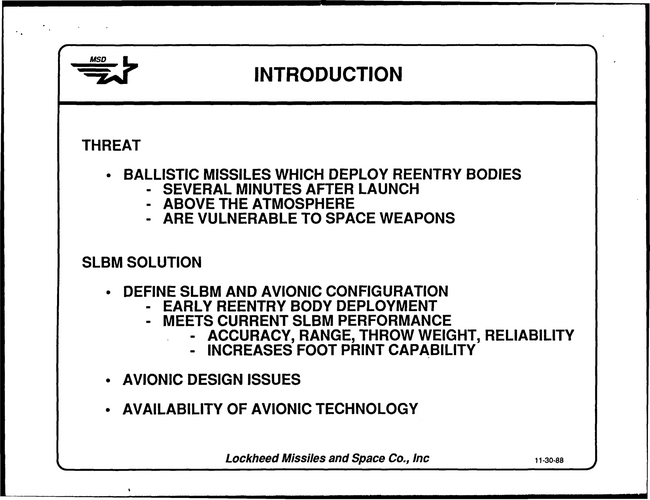

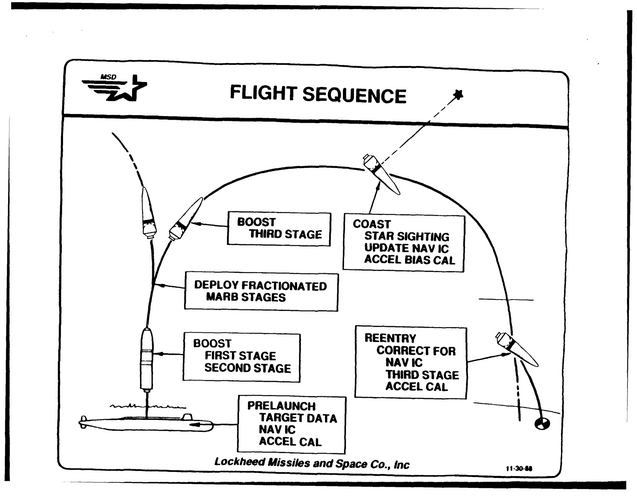
The point is the Soviets weren’t going to throw their hands in the air and say We Surrender. That was just one idea.The more warheads you put on a single missile, the worse the effectiveness would be against a fully deployed SDI.Soviet Kataev archive used in Hofman’s book The Dead Hand mentions plans for ICBMs with 20-40 warheads to get through a fully deployed SDI system. Could they afford that? Who knows.
Would love to see those archives. I think they would’ve rolled back out the 38 warhead plan & others if SDI was ever “fully deployed“.The 40 (or rather 38) MIRV design wasn't to deal with SDI defences, and died when SALT II was signed. Fractionated ICBMs and SLBMs, proposed by both the US and USSR, as seen in the images below, however, were. Ironically these were all probably more practical to develop and field than the defences they were designed to defeat.The more warheads you put on a single missile, the worse the effectiveness would be against a fully deployed SDI.Soviet Kataev archive used in Hofman’s book The Dead Hand mentions plans for ICBMs with 20-40 warheads to get through a fully deployed SDI system. Could they afford that? Who knows.
View attachment 685471
View attachment 685473
View attachment 685474
View attachment 685475
View attachment 685476
View attachment 685477
Interesting, so basically it's like a MIRV system but for second stage onwards, multiple second stages. Of course, based on the diagram it seems the chemical lasers would still be able to hit it pre-split.The 40 (or rather 38) MIRV design wasn't to deal with SDI defences, and died when SALT II was signed. Fractionated ICBMs and SLBMs, proposed by both the US and USSR, as seen in the images below, however, were. Ironically these were all probably more practical to develop and field than the defences they were designed to defeat.
View attachment 685471
View attachment 685473
View attachment 685474
View attachment 685475
View attachment 685476
View attachment 685477
I know the AICBM (aka WS-120A aka BGM-75) which eventually morphed into Peacekeeper was originally supposed to carry up to 20 warheads.Would love to see those archives. I think they would’ve rolled back out the 38 warhead plan & others if SDI was ever “fully deployed“.
Found the article. Well worth the read. and, btw Sentinel & Safeguard were to protect against a Chinese ICBM attack. Not against a force the size of an all out USSR strike.I apologize about bringing back politics. There was a Bulletin of the Atomic Scientists article from I think 2004 that goes into the adding on effect an ABM system creates. It draws more fire down on it to make sure it’s overwhelmed. The Bulletin is very peacinik-y but they have the best detailed articles. They‘ve put their archive behind a paywall now but I think I have it somewhere printed out. If I can find it, I’ll post pics. It compares 2 nuke targeting plans against Moscow. 1 from 1968, 1 from 1989. About double the amount of warheads targeted by 1989.KJ_Lesnick said:I'm curious about a couple of things I've read on this particular thread: I've tried to keep my questions concise for brevity purposes
I. Regarding the idea of ABM's being destabilizing
My assumption would be, from what I've read on this topic, that a missile shield is only destabilizing when it is actually capable of repelling nearly all or all ICBM attacks: Am I right or wrong?
Wrong. Anything that potentially prevents destruction of the ABM owner's own assets means that it will either be safe from a first strike or second, retaliatory strike. An ABM defence doesn't have to be 100% effective, in fact it doesn't have to be effective at all, however it has to be perceived as effective. Once the perception is planted and grows, the perceivers will act upon the assumption that it is effective. So, the first use imperative will grow, on both sides of a strategic balance. The owners, to destroy the potential threat that the other sides' ICBMs represent and the opponents' to ensure that while the ABM system is still being built and not yet operational, so as to prevent it from rendering it's ICBM forces obsolete.
This happened with the SDI "Star Wars" system. The US hyped it, with lots of pretty animations and drawings showing how it would destroy the nasty, incoming Soviet missiles and RVs. The Soviets fearful that their missiles would be rendered obsolete were forced to try and build their own (or more ICBMs to swamp SDI). No SDI system was built but the fear was sufficient to see the Soviets try and build the means of either matching or defeating it. The real danger was if the hawks had managed to gain power, that they would have seriously contemplated a first strike, rather than see their missiles rendered obsolete the moment the system was operational.
Remember, the Cold War was as much as about perceptions of capabilities as it was about the real capabilities themselves. Both sides often acted on faulty, flawed intel. In the US there was the "Bomber Gap", the "Missile Gap" and the "Window of Opportunity" which were used for domestic political gains. In the fUSSR there were similar scares about US capabilities, which led up the Able Archer '83 scare. The fUSSR was no more monolithic than the US and there were debates within the Politburo as to who or what should be believed, just as there were in the US. Hawks versus Doves, etc. Cold War Warriors who saw a capitalist under their beds, just as those in the US saw Communists under theirs.
I also own the BB Briggs book on strategic defense. And yeah, I think ABMs are both effective AND if not destabilizing, they further arms races. Now if your opponent can’t afford a large nuclear arsensal & you can, a small ABM system gives you some maneuvering room.
Soviet Kataev archive used in Hofman’s book The Dead Hand mentions plans for ICBMs with 20-40 warheads to get through a fully deployed SDI system. Could they afford that? Who knows.
The "Atomic scientists" part of this shows a gross naivety about war and economics. An ABM defense system does not create a response that is more massive. Instead, it shifts how things are done.I apologize about bringing back politics. There was a Bulletin of the Atomic Scientists article from I think 2004 that goes into the adding on effect an ABM system creates. It draws more fire down on it to make sure it’s overwhelmed. The Bulletin is very peacinik-y but they have the best detailed articles. They‘ve put their archive behind a paywall now but I think I have it somewhere printed out. If I can find it, I’ll post pics. It compares 2 nuke targeting plans against Moscow. 1 from 1968, 1 from 1989. About double the amount of warheads targeted by 1989.KJ_Lesnick said:I'm curious about a couple of things I've read on this particular thread: I've tried to keep my questions concise for brevity purposes
I. Regarding the idea of ABM's being destabilizing
My assumption would be, from what I've read on this topic, that a missile shield is only destabilizing when it is actually capable of repelling nearly all or all ICBM attacks: Am I right or wrong?
Wrong. Anything that potentially prevents destruction of the ABM owner's own assets means that it will either be safe from a first strike or second, retaliatory strike. An ABM defence doesn't have to be 100% effective, in fact it doesn't have to be effective at all, however it has to be perceived as effective. Once the perception is planted and grows, the perceivers will act upon the assumption that it is effective. So, the first use imperative will grow, on both sides of a strategic balance. The owners, to destroy the potential threat that the other sides' ICBMs represent and the opponents' to ensure that while the ABM system is still being built and not yet operational, so as to prevent it from rendering it's ICBM forces obsolete.
This happened with the SDI "Star Wars" system. The US hyped it, with lots of pretty animations and drawings showing how it would destroy the nasty, incoming Soviet missiles and RVs. The Soviets fearful that their missiles would be rendered obsolete were forced to try and build their own (or more ICBMs to swamp SDI). No SDI system was built but the fear was sufficient to see the Soviets try and build the means of either matching or defeating it. The real danger was if the hawks had managed to gain power, that they would have seriously contemplated a first strike, rather than see their missiles rendered obsolete the moment the system was operational.
Remember, the Cold War was as much as about perceptions of capabilities as it was about the real capabilities themselves. Both sides often acted on faulty, flawed intel. In the US there was the "Bomber Gap", the "Missile Gap" and the "Window of Opportunity" which were used for domestic political gains. In the fUSSR there were similar scares about US capabilities, which led up the Able Archer '83 scare. The fUSSR was no more monolithic than the US and there were debates within the Politburo as to who or what should be believed, just as there were in the US. Hawks versus Doves, etc. Cold War Warriors who saw a capitalist under their beds, just as those in the US saw Communists under theirs.
I also own the BB Briggs book on strategic defense. And yeah, I think ABMs are both effective AND if not destabilizing, they further arms races. Now if your opponent can’t afford a large nuclear arsensal & you can, a small ABM system gives you some maneuvering room.
Soviet Kataev archive used in Hofman’s book The Dead Hand mentions plans for ICBMs with 20-40 warheads to get through a fully deployed SDI system. Could they afford that? Who knows.

If you read the article, the number of warheads assigned to ABM suppression almost doubled btw 1968 & 1989. ALCMs were also part of the plan by then. It wasn’t a case of a total changeover from ballistic to cruise. Although in a previous post in this thread, switching to ALCMs had a weight/range penalty for the B-52s.The "Atomic scientists" part of this shows a gross naivety about war and economics. An ABM defense system does not create a response that is more massive. Instead, it shifts how things are done.I apologize about bringing back politics. There was a Bulletin of the Atomic Scientists article from I think 2004 that goes into the adding on effect an ABM system creates. It draws more fire down on it to make sure it’s overwhelmed. The Bulletin is very peacinik-y but they have the best detailed articles. They‘ve put their archive behind a paywall now but I think I have it somewhere printed out. If I can find it, I’ll post pics. It compares 2 nuke targeting plans against Moscow. 1 from 1968, 1 from 1989. About double the amount of warheads targeted by 1989.KJ_Lesnick said:I'm curious about a couple of things I've read on this particular thread: I've tried to keep my questions concise for brevity purposes
I. Regarding the idea of ABM's being destabilizing
My assumption would be, from what I've read on this topic, that a missile shield is only destabilizing when it is actually capable of repelling nearly all or all ICBM attacks: Am I right or wrong?
Wrong. Anything that potentially prevents destruction of the ABM owner's own assets means that it will either be safe from a first strike or second, retaliatory strike. An ABM defence doesn't have to be 100% effective, in fact it doesn't have to be effective at all, however it has to be perceived as effective. Once the perception is planted and grows, the perceivers will act upon the assumption that it is effective. So, the first use imperative will grow, on both sides of a strategic balance. The owners, to destroy the potential threat that the other sides' ICBMs represent and the opponents' to ensure that while the ABM system is still being built and not yet operational, so as to prevent it from rendering it's ICBM forces obsolete.
This happened with the SDI "Star Wars" system. The US hyped it, with lots of pretty animations and drawings showing how it would destroy the nasty, incoming Soviet missiles and RVs. The Soviets fearful that their missiles would be rendered obsolete were forced to try and build their own (or more ICBMs to swamp SDI). No SDI system was built but the fear was sufficient to see the Soviets try and build the means of either matching or defeating it. The real danger was if the hawks had managed to gain power, that they would have seriously contemplated a first strike, rather than see their missiles rendered obsolete the moment the system was operational.
Remember, the Cold War was as much as about perceptions of capabilities as it was about the real capabilities themselves. Both sides often acted on faulty, flawed intel. In the US there was the "Bomber Gap", the "Missile Gap" and the "Window of Opportunity" which were used for domestic political gains. In the fUSSR there were similar scares about US capabilities, which led up the Able Archer '83 scare. The fUSSR was no more monolithic than the US and there were debates within the Politburo as to who or what should be believed, just as there were in the US. Hawks versus Doves, etc. Cold War Warriors who saw a capitalist under their beds, just as those in the US saw Communists under theirs.
I also own the BB Briggs book on strategic defense. And yeah, I think ABMs are both effective AND if not destabilizing, they further arms races. Now if your opponent can’t afford a large nuclear arsensal & you can, a small ABM system gives you some maneuvering room.
Soviet Kataev archive used in Hofman’s book The Dead Hand mentions plans for ICBMs with 20-40 warheads to get through a fully deployed SDI system. Could they afford that? Who knows.
For example, in the late 40's and early 50's the expected means of nuclear attack was by subsonic "strategic" long-range bombers. The response was developing SAM, fighter, and early warning systems that could intercept and shoot these down before they reached their targets.
When IRBMs and ICBMs became a more capable alternative, defense shifted to passive means to survive such attacks as the missiles couldn't be shot down. Had an effective ABM system come about, the means of delivery would likely have changed to say, high-speed (high subsonic, transonic, or even supersonic) cruise missiles that could evade the ABM system and things like SAMs.
That might look like say AGM-28 Hound Dog:
View attachment 685509
Now your ABM system is worthless, and your previous SAM system needs serious upgrading to be able to intercept a low-flying very fast target in an ECM environment. Same number of warheads, just the delivery system has changed to keep it effective.
Yes, you have to spend to keep up with these changes, but that's inevitable.
Had an effective ABM system come about, the means of delivery would likely have changed to say, high-speed (high subsonic, transonic, or even supersonic) cruise missiles that could evade the ABM system and things like SAMs.
Now your ABM system is worthless, and your previous SAM system needs serious upgrading to be able to intercept a low-flying very fast target in an ECM environment. Same number of warheads, just the delivery system has changed to keep it effective.
Yes, you have to spend to keep up with these changes, but that's inevitable.

I'm not sure if this was ever covered before, but wouldn't the detonation make for a giant dirty-bomb? While it wouldn't produce a huge explosion, the radiation appears to be quite substantial.If you were to hit a nuclear warhead with a large sleet of neutrons; the materials in the warhead would gobble it up like crazy, and cause the warhead to dud when the signal to initate it is sent.
This is actually mentioned here:If you were to hit a nuclear warhead with a large sleet of neutrons; the materials in the warhead would gobble it up like crazy, and cause the warhead to dud when the signal to initate it is sent.

I'm not sure if this was ever covered before, but wouldn't the detonation make for a giant dirty-bomb? While it wouldn't produce a huge explosion, the radiation appears to be quite substantial.
One possible outcome not mentioned by Ryan is the possibility of creating a non sustaining prompt criticality ( not quite a chain reaction) in the nuke that releases sufficient energy to disintegrate the RV.
What would happen is that the fast-neutrons would induce enough fissions in the plutonium pit to heat briefly into a molten state causing it to slump and deform so that even if the warhead's X-unit was able to fire properly there'd be no symmetrical implosion and it would fizzle.
So the issue is based on the amount of overall destruction? Did they have any ability to clean up plutonium dust over a few square miles in the 1970's?As for the outcome, half a square mile showered with plutonium fragments is bad, but 50 square miles being erased from history is far far worse.
I don't suppose that you still have that PDF about the 1400+ G acceleration missile, do you?bobbymike said:sferrin - thanks for the stats. The Super Roadrunner (Meep Meep) is an amazing system. I wonder if a system like LOSAT or CKEM use similar solid propellant for their "acceleration"?
Advanced energetics for propulsion and warheads are an incredibly important part of future warfighting requirements. In the National Academy Press report on Future Strategic Strike they recommended aggressive R&D on energetics to produce material 100 X'sas energetic as TNT, when today's state of the art is around four or five X's as measured by energy per volume and density. Imagine a one hundred pound bomb with the explosive power of today's 2000 pounders.
There have been some pretty impressive ideas out there over the years. Sprint at 100Gs or so, HiBEX at nearly 400Gs, several European programs the name of which escapes me (there was the PDF floating around the site with the Typhoon carrying air-launched ABMs). LOSAT and CKEM definitely are fast accelerators and one antitank concept I have in a PDF around here was to be a cold launched missile with thrusters to tip it over (much like Tor / SA-15) which would then accelerate at 1400+ Gs.There was another ABM test vehicle that I only know from a blurb in a Military Technology supplamental on the value of computer simulation. They talked about an ABM test vehicle that accelerated at 400Gs that they only launched once and that was just to validate the simulation. Then there's the Russian Gazelle and S-300V, and at least one Chinese test vehicle. . .
I don't suppose that you still have that PDF about the 1400+ G acceleration missile, do you?bobbymike said:sferrin - thanks for the stats. The Super Roadrunner (Meep Meep) is an amazing system. I wonder if a system like LOSAT or CKEM use similar solid propellant for their "acceleration"?
Advanced energetics for propulsion and warheads are an incredibly important part of future warfighting requirements. In the National Academy Press report on Future Strategic Strike they recommended aggressive R&D on energetics to produce material 100 X'sas energetic as TNT, when today's state of the art is around four or five X's as measured by energy per volume and density. Imagine a one hundred pound bomb with the explosive power of today's 2000 pounders.
There have been some pretty impressive ideas out there over the years. Sprint at 100Gs or so, HiBEX at nearly 400Gs, several European programs the name of which escapes me (there was the PDF floating around the site with the Typhoon carrying air-launched ABMs). LOSAT and CKEM definitely are fast accelerators and one antitank concept I have in a PDF around here was to be a cold launched missile with thrusters to tip it over (much like Tor / SA-15) which would then accelerate at 1400+ Gs.There was another ABM test vehicle that I only know from a blurb in a Military Technology supplamental on the value of computer simulation. They talked about an ABM test vehicle that accelerated at 400Gs that they only launched once and that was just to validate the simulation. Then there's the Russian Gazelle and S-300V, and at least one Chinese test vehicle. . .
I don't suppose that you still have that PDF about the 1400+ G acceleration missile, do you?bobbymike said:sferrin - thanks for the stats. The Super Roadrunner (Meep Meep) is an amazing system. I wonder if a system like LOSAT or CKEM use similar solid propellant for their "acceleration"?
Advanced energetics for propulsion and warheads are an incredibly important part of future warfighting requirements. In the National Academy Press report on Future Strategic Strike they recommended aggressive R&D on energetics to produce material 100 X'sas energetic as TNT, when today's state of the art is around four or five X's as measured by energy per volume and density. Imagine a one hundred pound bomb with the explosive power of today's 2000 pounders.
There have been some pretty impressive ideas out there over the years. Sprint at 100Gs or so, HiBEX at nearly 400Gs, several European programs the name of which escapes me (there was the PDF floating around the site with the Typhoon carrying air-launched ABMs). LOSAT and CKEM definitely are fast accelerators and one antitank concept I have in a PDF around here was to be a cold launched missile with thrusters to tip it over (much like Tor / SA-15) which would then accelerate at 1400+ Gs.There was another ABM test vehicle that I only know from a blurb in a Military Technology supplamental on the value of computer simulation. They talked about an ABM test vehicle that accelerated at 400Gs that they only launched once and that was just to validate the simulation. Then there's the Russian Gazelle and S-300V, and at least one Chinese test vehicle. . .


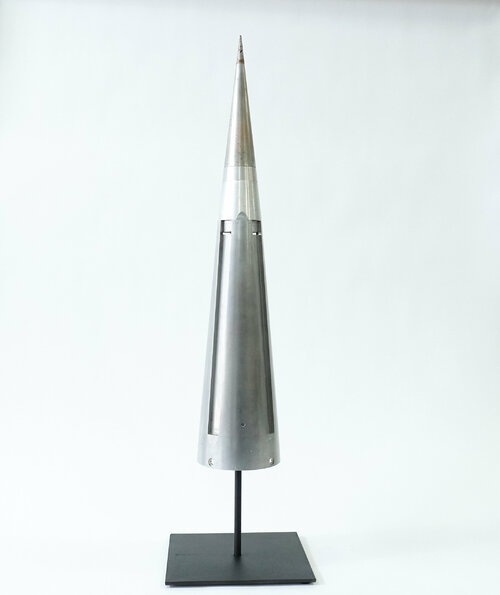

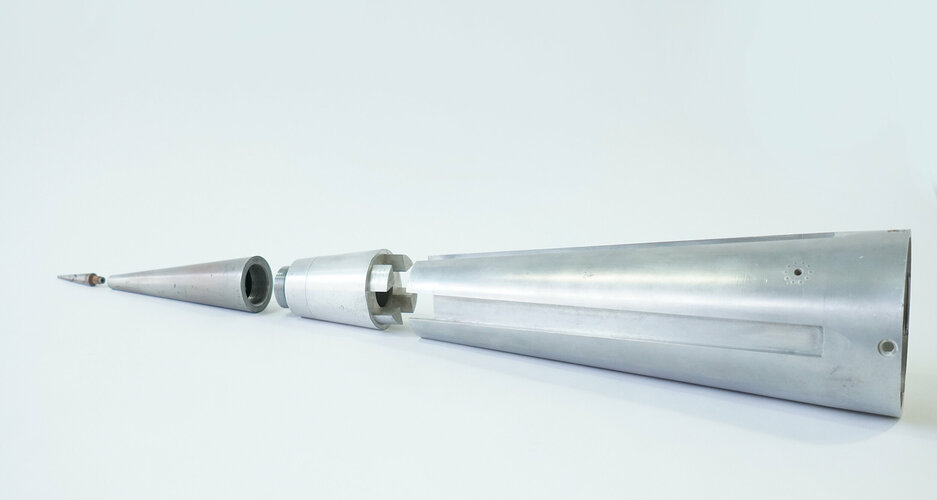
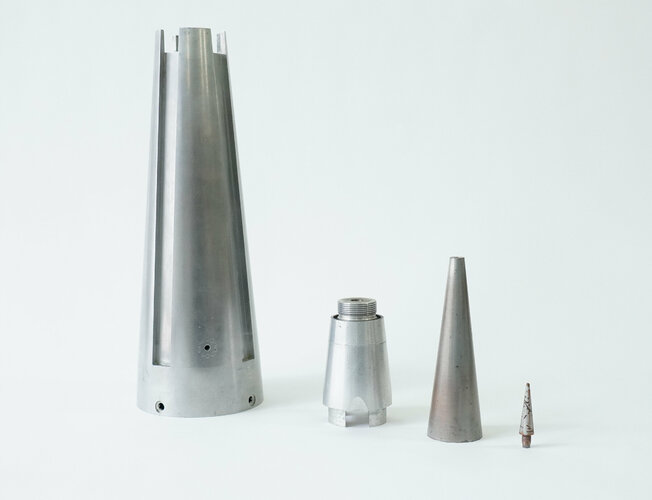



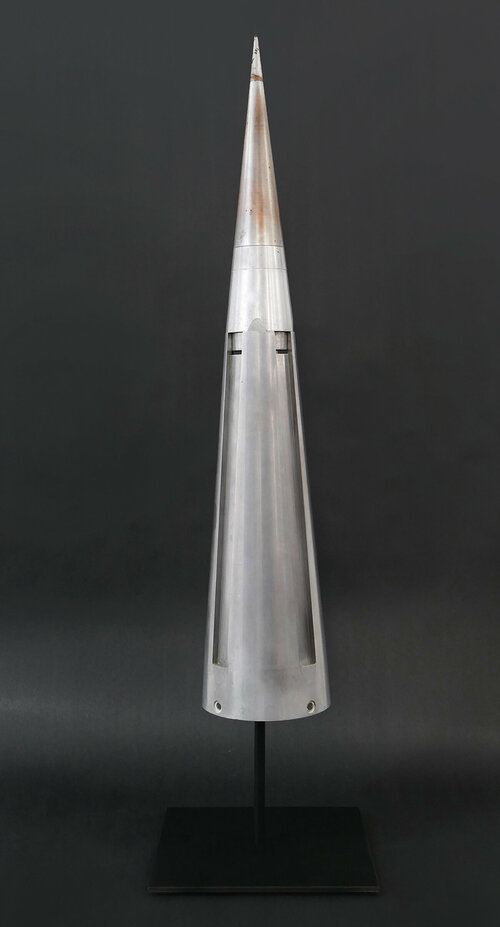
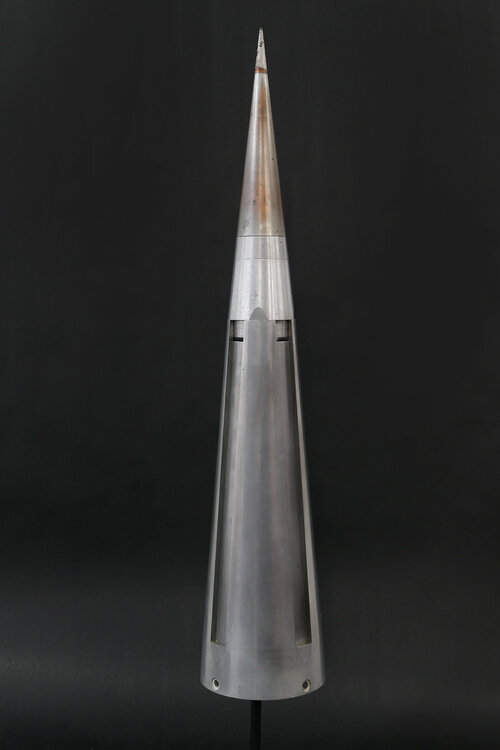
Pardon me, old question:I'm curious about a couple of things I've read on this particular thread: I've tried to keep my questions concise for brevity purposes
I. Regarding the idea of ABM's being destabilizing
My assumption would be, from what I've read on this topic, that a missile shield is only destabilizing when it is actually capable of repelling nearly all or all ICBM attacks: Am I right or wrong?
On early weapons designs, it can cause them to fizzle. "Where was the earthshattering kabewm?"Apperantly the Spartan nuke was expected to be able to proxy kill the income warheads by burn out the electronics and fucking up the warhead itself via its radaition pulse*. If turn that will take care of the Decoys and at the time Mirvs pretty well since they had to get within the Spartan range before splitting up to Mirv and would be close enough that it wasn't consider that big of an issue.
Then the Sprint was apparently to have a fairly large kill radius again thanks to the radiation pulse and being a nuclear explosion in atmosphere basically.
With Decoys being consider none issue since these where area of effect weapons and not point, while the SLBM was also consider still a easy target for the Sprint.
*I have heard of this before with the AIM26 and Genie nuclear A2A weapons. How well does that pan out?
The long term effects would probably destroy the nuke (heating and burning the explosives, plus melting the plutonium). But that's going to have a lot of setup time to build, plus it'll require some odd angles for the accelerator to put the collider sections so they shoot through the earth at (insert nation).
Ed Teller is crying somewhere--poor baby...
Thought it was John von Neumann who Kubrick modelled Strangelove after.He was obsessed with thermonuclear weapons, after Dr. Strangelove was modelled on him and I have no doubt if you showed him a live TN-warhead he'd have pitched a tent.
Thought it was John von Neumann who Kubrick modelled Strangelove after.
Difficult to say how much involvement Teller had. It’s commonly credited to Samual T Cohen who started work on it in 1958 while at UCRL. Somewhere out there is a fairly open interview where he gives a description of working on it especially the early stages.If so then Teller would've had a hand in its' development.
